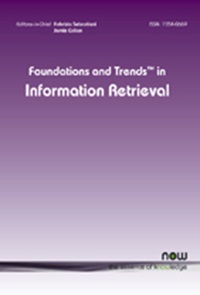会话AI的神经方法
IF 12.9
2区 计算机科学
Q1 COMPUTER SCIENCE, INFORMATION SYSTEMS
引用次数: 0
摘要
本文概述了在过去几年中发展起来的会话人工智能的神经方法。我们将会话系统分为三类:(1)问答代理,(2)面向任务的对话代理,(3)聊天机器人。对于每个类别,我们都介绍了最新的神经方法,绘制了它们与传统方法之间的联系,并讨论了已经取得的进展和仍然面临的挑战,使用特定的系统和模型作为案例研究。本文章由计算机程序翻译,如有差异,请以英文原文为准。
Neural Approaches to Conversational AI
The present paper surveys neural approaches to conversational AI that have been developed in the last few years. We group conversational systems into three categories: (1) question answering agents, (2) task-oriented dialogue agents, and (3) chatbots. For each category, we present a review of state-of-the-art neural approaches, draw the connection between them and traditional approaches, and discuss the progress that has been made and challenges still being faced, using specific systems and models as case studies.
求助全文
通过发布文献求助,成功后即可免费获取论文全文。
去求助
来源期刊

Foundations and Trends in Information Retrieval
COMPUTER SCIENCE, INFORMATION SYSTEMS-
CiteScore
39.10
自引率
0.00%
发文量
3
期刊介绍:
The surge in research across all domains in the past decade has resulted in a plethora of new publications, causing an exponential growth in published research. Navigating through this extensive literature and staying current has become a time-consuming challenge. While electronic publishing provides instant access to more articles than ever, discerning the essential ones for a comprehensive understanding of any topic remains an issue. To tackle this, Foundations and Trends® in Information Retrieval - FnTIR - addresses the problem by publishing high-quality survey and tutorial monographs in the field.
Each issue of Foundations and Trends® in Information Retrieval - FnT IR features a 50-100 page monograph authored by research leaders, covering tutorial subjects, research retrospectives, and survey papers that provide state-of-the-art reviews within the scope of the journal.
 求助内容:
求助内容: 应助结果提醒方式:
应助结果提醒方式:


